This is the second of two columns that originally ran at FederalNewsNetwork.com
ABOARD THE U.S.S. GERALD R. FORD — After a long morning of coffee and marching through the giant ship’s corridors and up and down its steep, ladderlike staircases, I had to, you know, go. The executive officer, Capt. Jeremy Shamblee, escorted me and one other reporter to his cabin so we could use the head. Officers’ quarters have a private bath, a large desk, a bank of lockers, and a built-in sofa — upholstered in an imponderably bright red vinyl — that flips away to reveal a sort of Murphy bed. The room appears large, with a big area of empty floor space.
Although officers do live better than enlisted sailors, who sleep in 40-person berths with common toilet and shower facilities, for everyone the ship is a fairly unforgiving, steel environment to which people must adapt, not the other way around. Or so it seems. I guess that’s true of all military environments. Anyhow, it’s something I noticed on my Tuesday tour, courtesy of the Navy, of the nation’s newest aircraft carrier. The Ford is still in its post-delivery trials and testing phase. More about that in my previous column.
To be sure, the Ford-class carriers include many improvements over the Nimitz class carriers, designed to improve working conditions and life for the crews. The Ford’s now-famous elevators work faster and with destinations and layouts that improve the efficiency of weapons movement and attaching to planes more safely. Refueling of planes occurs through trapdoor stations so sailors don’t need to drag hoses across the deck. The ship has only two, rather than five, galleys on the mess deck and with different layouts. So food lines are faster, and food preparation more consistent. Berths are smaller than those on the Nimitz class carriers, so there’s less sleep-disrupting foot traffic in and out. Air conditioning has been re-thought. Corridors are a bit wider on Ford than on Nimitz carriers.
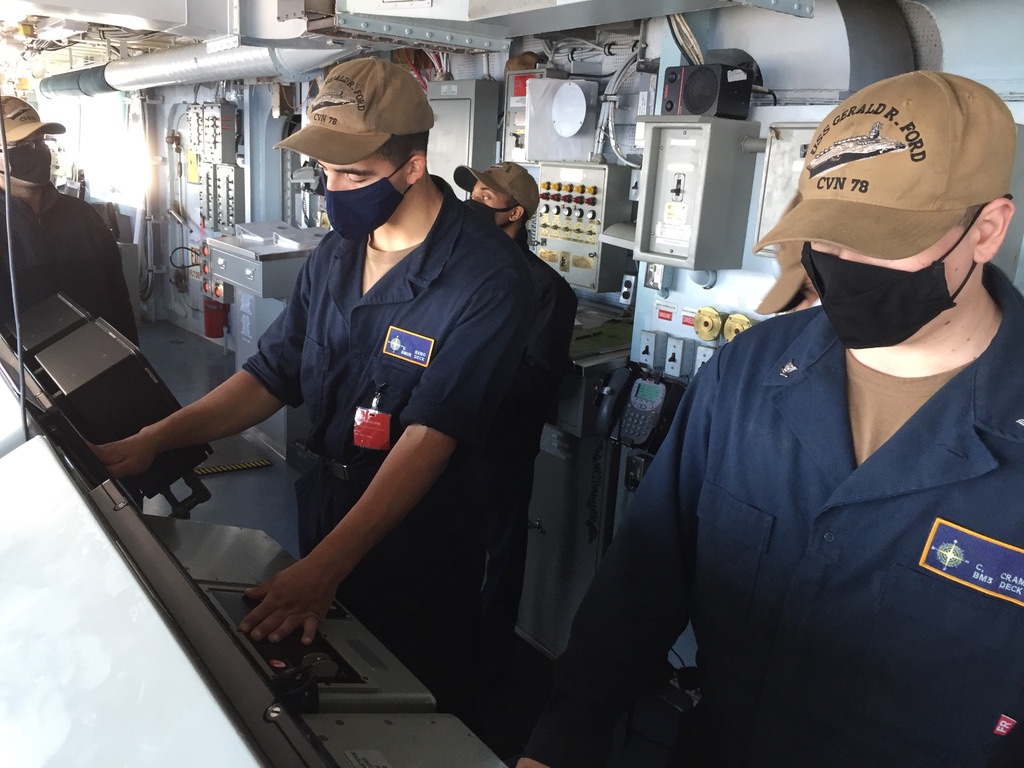
It’s not the Sloop John B., but life is nonetheless strenuous on the carrier. You get the strong impression of forward motion and purpose in the sailors’ activities. The flight deck operations look positively adrenaline-soaked. Less so down in the galley, perhaps, but Culinary Specialist 1st Class Bennette Walton, topped in crisp paper chef’s toque, waxed enthusiastically about the touch screen oven that makes food preparation faster and more reliable.
On the bridge there’s a constant verbal murmur of navigation settings, steering and power level orders and confirmations as some operators look up at overhead displays and out to the flight deck and the horizon. Others stand at nearby consoles, gazing at monitors, hands on controls. In one of the dim information warfare rooms, lit mainly by the gigantic flat screen displays, Capt. Steven Shepard, the information warfare commander for the Carrier Strike Group 12, describes how much more extensive onboard data systems can be simply because of how much more electrical power is available on the Ford class than on the Nimitz.
Whereas the Nimitz class ships are operating at the limits of their power generating capability, the Ford, at sea and with two thirds of its eventual air wing on the deck using the power-hungry electromagnetic catapult launch assist system, is loafing, using only 25 percent of its potential power.
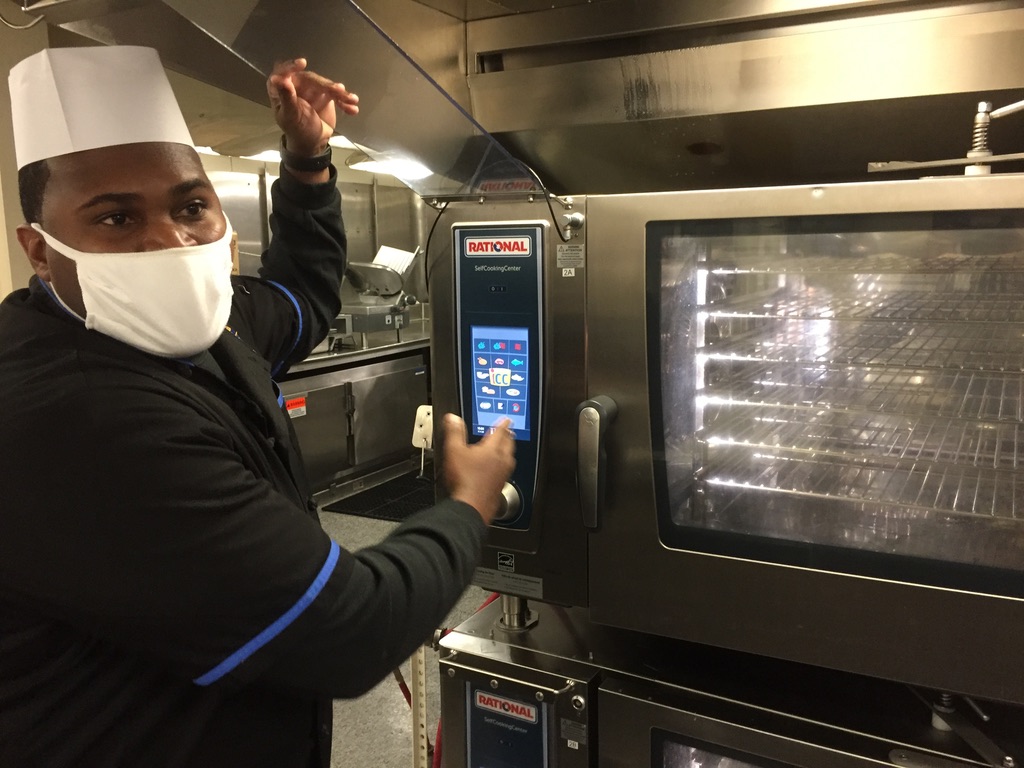
While my tour group was on the bridge, the Ford was completing a 90-degree right turn. I was astonished at watching the bow come ’round. I thought, you really can turn a battleship. And perhaps that is my dominant impression. The ship — an infinitely complex system of systems wrapped in 90,000 tons of steel and paint —was delivered by the contractors a few years ago in a basically useless state. It floated. It could move about on its own power. But turning it into an instrument of national defense has required thousands of successive crewmembers using brains, muscle and willpower to bend and hammer the thing into usefulness.
Impressive as its specifications are — and they are impressive by any measure — this supercarrier, like all of the Navy ships that preceded it, is ultimately a human endeavor.
I would not presume to have any more than the most superficial understanding of military life in general, much less the subset of life within the confines of an aircraft carrier. The older I get, the more I realize how difficult are the skills acquired by other people. Before pro baseball pitchers, concert pianists or carrier-based pilots, I stand in awe.
To me the mysterious source is how the brass maintain both crisp command and control, and consistent good morale. A few things I noticed on the Ford:
If you expect to see uniform uniformity, forget it. Sailors up and down the ranks wear, in daily routine, an astonishing array of uniforms. Many pullover shirts appear color-coded for the job function, part of the signaling for task as well as for rank.
When the carrier group commander — in the case of my visit, Rear Adm. Craig Clapperton — passes in a corridor, he exchanges hearty greetings with the crew members we happen upon. They don’t jump to attention and bang the backs of their heads on metal. It sounds more like everyone tries to maintain balance between the demands of rank with the need for informality. Daily life on board is no parade ground tattoo.
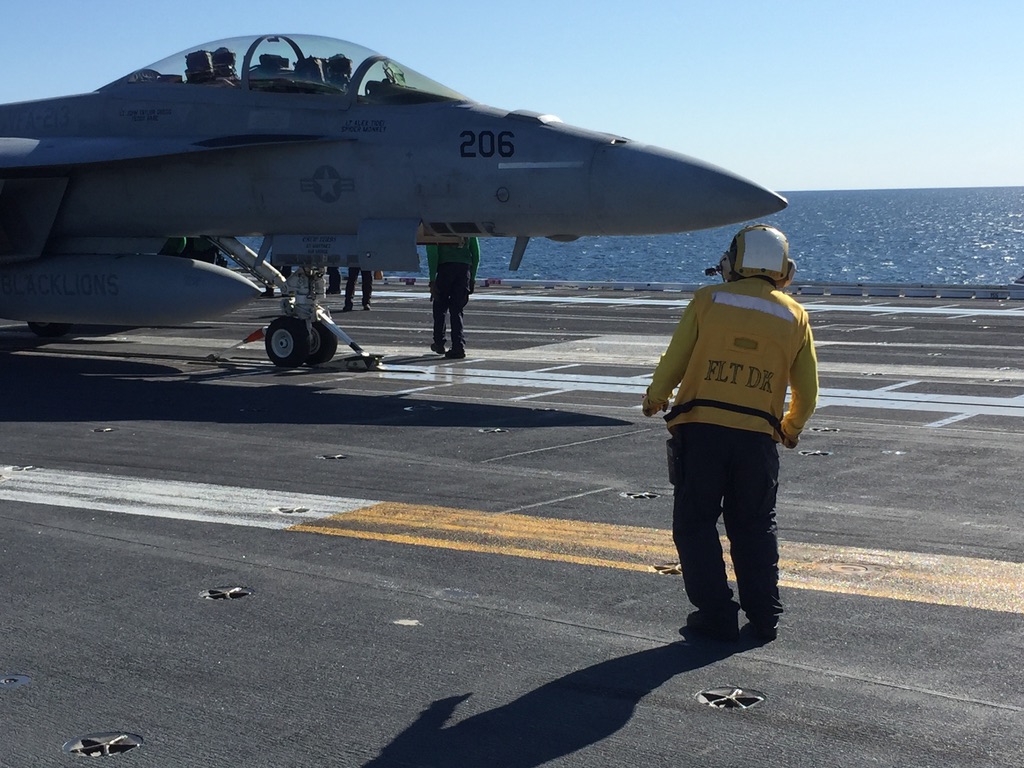
Even rank has limits. When showing us the chiefs’ mess, at that moment unoccupied, Clapperton commented that, despite his flag rank, he would not enter the room during a meal unless invited. “This is their space. They eat here, but also do a lot of work here,†he said. There is flag rank respect for the chiefs, who constitute a sort of knee cartilage, shock-absorbing layer of staff between the officers and the rest of the enlisted sailors.
The Navy public affairs people presented the visiting reporters a lineup of five sailors to speak to out of earshot of the officers. Of course there’s a bit of propaganda to it, and I wasn’t born yesterday. But these guys seemed to genuinely like Navy life, and I didn’t sense any sort of “they put me up to it†or robotic praise in their comments.
For example, Lt. Cmdr. Tyler Dunn, from Charlotte, North Carolina, said he was wondering what to do in life when a Navy recruiter walked into a thermodynamics class at a state university. “He told me I could fly planes, and the rest is history.â€
Dunn flew P-8 surveillance planes, modified 737s. He’s not current now, having been assigned to the Ford’s bridge as an officer of the deck. After this two-year tour, he’ll return to a training squadron to get current again. “And I’ll be off to the races with a more profound respect for what the carrier strike group as a whole brings to the fight.†He likes the life, with his wife home working as a provost at a seminary and finishing her doctorate. Dunn plans to eventually return to school for that engineering degree.
I also spoke with Aviation Support Equipment Technician 2nd Class Gary Bohn and Aviation Electronics Technician 2nd Class Joshua Boyd. They said the work and life are challenging but that they like it. A big lament is the closure of the Ford’s gyms because of the COVID threat. A runner, I asked them about the flight deck. Bohn said it is regularly opened for running, and in fact encouraged.
Boyd said, “The cool thing about the Navy and being on this ship is, as much as you want to do, if you have the will and you know the instructions, you can go out and be a part and do things.†He works in electrical safety and even in career counseling for other sailors.
At a Q&A with the commanders, I asked whether, in their work getting the Ford ready for deployment, they thought about the fact that given the ship’s expected lifespan, its final crew will be the grandchildren or great grandchildren of the current crew members.
Capt. Shamblee jumped on it. “For a commanding officer who leads or builds a team, it’s all about the culture of that command, and how you engrain dignity and respect, really bake it into the steel of that ship.†He added, “If you get that right, the ship will go on to have a great history. They’ll take care of her equipment, operate safely, continue to build on that environment.â€
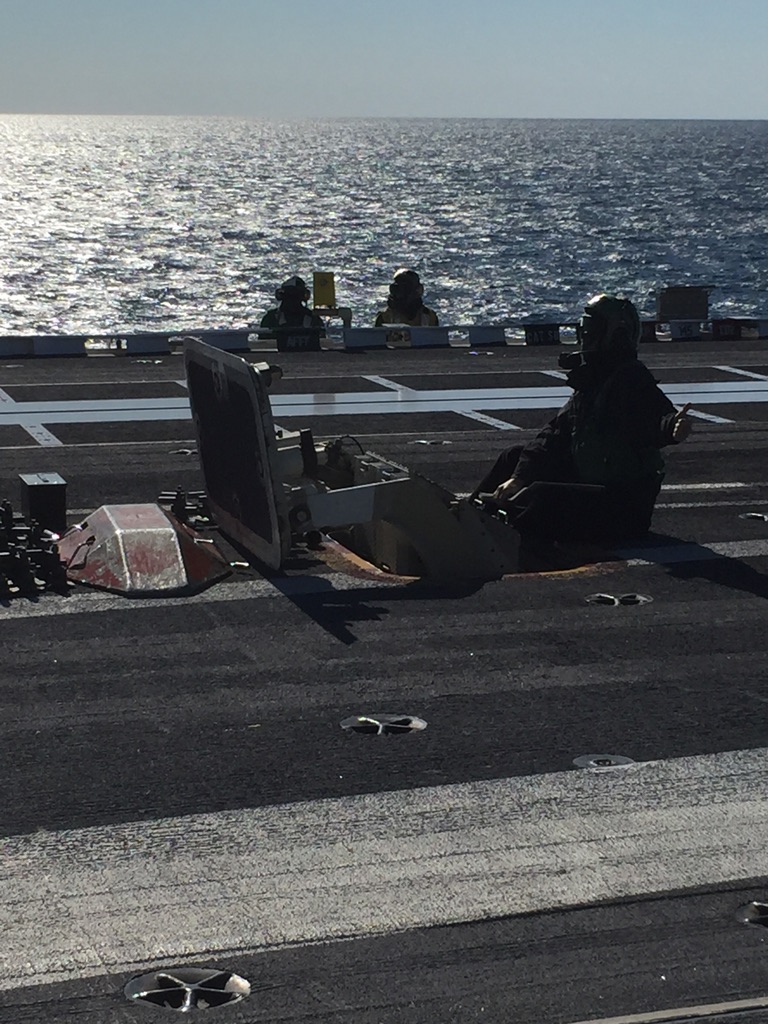
Air Wing Eight Commander Capt. Joshua Sager added, “These are the sailors that are setting the precedent, that are building the foundation for that next hundred years of naval aviation operations. That’s a huge opportunity and I think the sailors are charged up for it.â€
Far — perhaps not yet in miles but certainly in psychic distance — from the noise and politics emanating from and around Washington, these commanders and their several thousand sailors on deck and in the sky have been entrusted with an asset of immense value. And not just in dollars. The Ford looks to be in sound hands.
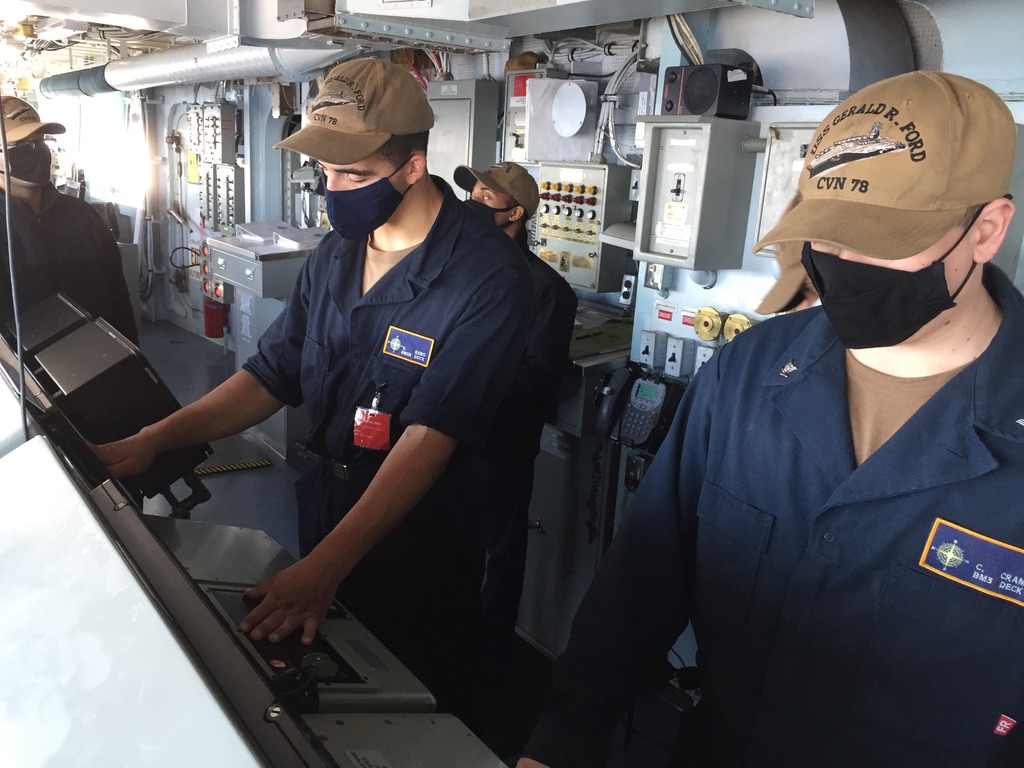
Comments are closed.